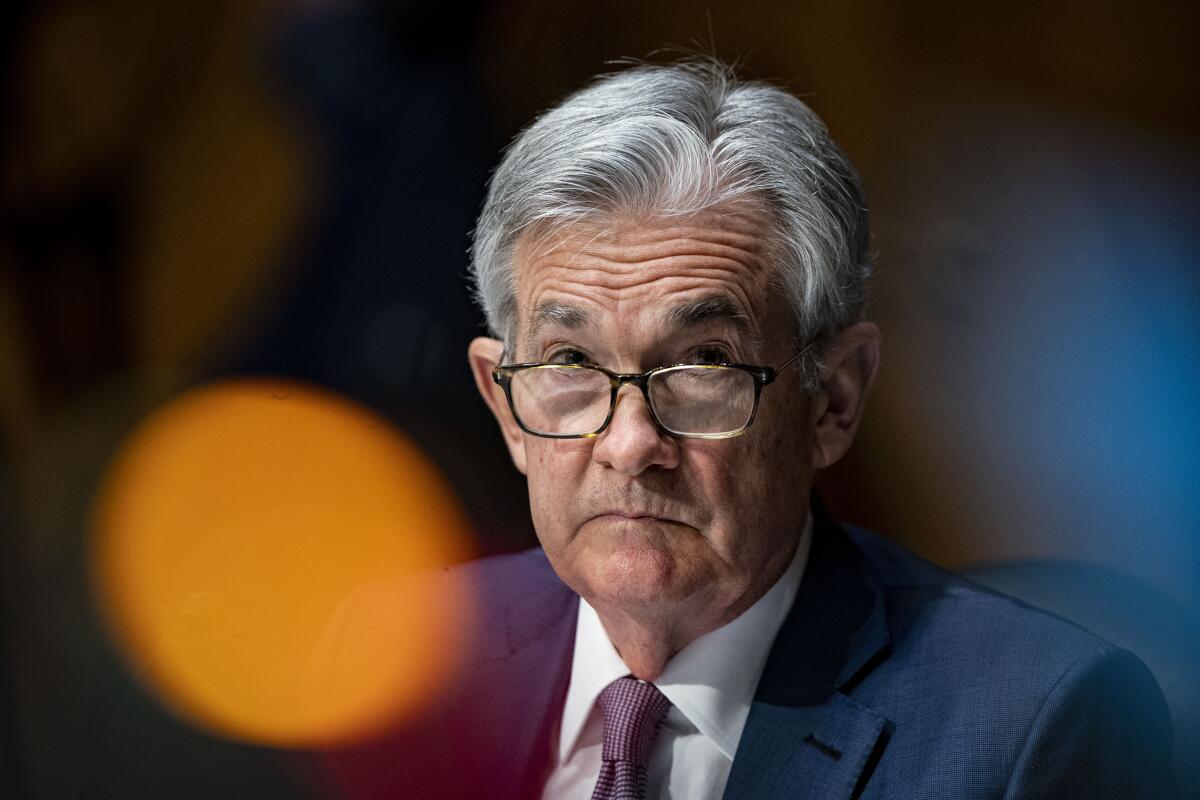In this recovering economy, prices may tick up but inflation is not a problem

- Share via
The financial and economic news in the United States lately has been dominated by concerns about inflation.
“Runaway inflation is the biggest risk facing investors,” says a commentator on CNBC. As a potential hedge against inflation, “Bitcoin’s time to shine is fast approaching,” reports Fortune. “There is a lot of talk about inflation in 2021 as fears of high government spending creep in,” according to U.S. News and World Report.
And yet, one also reads that “U.S. Treasury yields hold ground even as inflation picks up.” After growing at an annualized rate of 33.4% in the third quarter of 2020, 4.3% in the fourth quarter, and 6.4% in the first quarter of this year, the U.S. economy is on track for a full recovery. The second-quarter growth rate is expected to be at least 8%, and perhaps significantly higher, which means that the economy, in aggregate, will have fully returned to its pre-pandemic production level by the third or fourth quarter of this year.
In this context, it is no surprise that core inflation (which excludes food and energy prices) rose 0.4% in February. That rate implies nearly a 5% annual inflation rate. But looking back over the last 12 months, the core inflation rate (as measured by the consumer price index) was 2.3%, which is in keeping with the Federal Reserve’s 2% to 2.5% target.
The question is not whether there will be some inflation this year, but whether it will represent “overheating” of the economy as a whole. Most likely, it will not. The outlook for 2021 and beyond is that inflation will hover around the Fed’s target, rather than consistently falling short, as it has for the last 13 years.
Moreover, the economy is emerging from the pandemic recession with a fundamentally altered balance among sectors. Spending on durable goods currently accounts for an additional 1.7 percentage points of GDP, relative to its 2019 level, and spending on housing construction is running at 0.5 point above its 2019 share. At the same time, business spending on structures and consumer spending on energy are both running at 0.5 point below their 2019 shares, and spending on services (hospitality, recreation and transportation) is 2.2 points below its 2019 share.
These shifts will be the most important determinants of inflation this year. By the end of 2021, some 4% of all workers will have moved not only to new jobs but to entirely different sectors. In an economy where businesses very rarely cut wages, the pull of workers from sectors where demand is relatively slack to sectors where it is more intense will require firms to offer wage increases to encourage workers to make the jump.
But we cannot know how much inflation this reshuffling will cause, because we have not really seen anything like it before. Economists will have a lot to learn this year about this kind of dynamic.
One thing that should be clear, however, is that an uptick of inflation this year is nothing to be upset about. After all, wage and price increases are an essential part of rebalancing the economy. Real production, real wages and real asset values will all be higher as a result of this year’s inflation, whereas the price level will remain far below what it would have been had the Fed managed to hit its inflation targets in the years since the Great Recession following the 2008 global financial crisis.
While some commentators worry that we may be returning to the 1970s, this is highly unlikely. That decade’s stagflation conditions followed from a perfect storm of shocks, and were exacerbated by the Fed’s conflicted and confused response under Chairman Arthur Burns. Today’s Fed leadership is very different, and there is no perfect storm of repeated shocks to match the effects of the slowdown of productivity growth in the 1970s and other events of that era.
Burning rubber to rejoin highway traffic is not the same thing as overheating the engine.
J. Bradford DeLong, a former deputy assistant U.S. Treasury secretary, is professor of economics at UC Berkeley and a research associate at the National Bureau of Economic Research.
More to Read
A cure for the common opinion
Get thought-provoking perspectives with our weekly newsletter.
You may occasionally receive promotional content from the Los Angeles Times.









